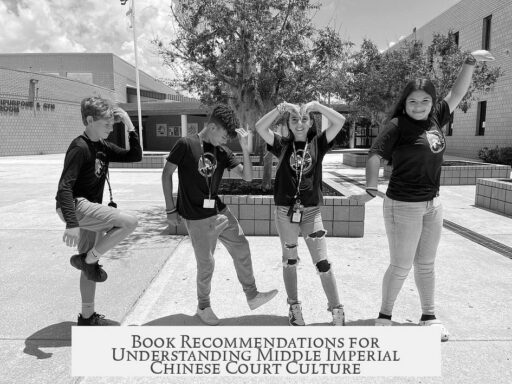The Tutsi minority in Rwanda, though comprising only 10-15% of the population and deeply victimized during the genocide, achieved control over the country and launched significant military campaigns due to a combination of regional networks, military experience, leadership, and Hutu divisions.
The Tutsi are not confined to Rwanda. Millions live in neighboring Burundi and Congo. This regional presence helped the Tutsi-led Rwandan Patriotic Front (RPF) regroup outside Rwanda when exiled. The cross-border Tutsi communities provided vital manpower and logistic support for the RPF’s comeback.
The RPF emerged from the Rwandan Alliance for National Unity (RANU) in exile, based in Uganda during the 1970s and 1980s. The group developed strong alliances with Ugandan forces, notably Yoweri Museveni’s rebel movement. Paul Kagame, the future Rwandan president, rose through Ugandan military intelligence, while other Rwandans, like Fred Rwigema, gained command experience in Uganda’s armed forces.
This Ugandan connection was key. The RPF leadership and fighters gained practical combat experience during Uganda’s Bush War. Their military was professional, disciplined, and battle-hardened compared to regional standards. The RPF benefited from effective organization and training that helped it survive and grow.
In 1990, the RPF launched its first invasion of Rwanda. Despite losing Rwigema early, Kagame’s leadership emerged strongly. Kagame had spent part of that period learning from the U.S. military, improving his strategic and organizational skills.
The invasion soon led to the Arusha Accords, which were seen as a setback for the Hutu-dominated government. Crucially, the RPF was not forced to disarm, allowing it to remain a capable force.
When the 1994 genocide began, the Hutu government was fractured. Many military units either participated in atrocities, fought each other, or clashed with the interim government. The RPF remained unified and disciplined. Unlike the fragmented and chaotic Hutu side, the RPF fought decisively against militias like the Interahamwe and defeated them militarily.
Additionally, the genocide was less a centralized state operation than a mass hysteria with local initiatives. This lack of centralized command weakened the Hutu efforts and gave the RPF room to maneuver.
After stopping the genocide, the RPF quickly cemented control over Rwanda, establishing a one-party state under Kagame’s leadership. The RPF’s professional army and internal cohesion enabled this swift political transition.
Beyond Rwanda, the RPF projected power into the eastern Congo. Its regional Tutsi alliances with local militias and superior military organization allowed it to launch two devastating wars in Congo. Competing local forces often lacked the discipline and unity of the RPF, which could leverage these advantages to dominate cross-border conflicts.
| Factor | Explanation |
|---|---|
| Regional Tutsi Diaspora | Provided base for regrouping and alliances outside Rwanda. |
| Exile in Uganda & RPF Formation | Built key political and military ties with Ugandan rebels and intelligence. |
| Military Experience | Combat experience from Uganda’s Bush War created a professional force. |
| Arusha Accords | Allowed RPF to remain armed despite ceasefire, preserving military strength. |
| Divided Hutu Factions | Hutu militias and army units were fragmented and often fought each other. |
| Kagame’s Leadership | Enhanced by Ugandan background and US military training, promoting discipline and strategy. |
| Post-Genocide Political Control | RPF quickly established a one-party state capitalizing on military success. |
| Regional Military Campaigns | Exploited alliances and professionalism to influence conflicts in Congo. |
Overall, the RPF combined diaspora networks, elite military experience, strategic leadership, and the chaotic state of opposing forces. These elements enabled the Tutsi minority to reverse their historical vulnerability, end the genocide, control Rwanda, and project power regionally.
- Tutsi diaspora gave the RPF a base beyond Rwanda’s borders.
- Rwandan exiles in Uganda gained military and political expertise.
- RPF’s combat experience surpassed local Hutu forces.
- Divisions among Hutu militias weakened genocide perpetrators.
- Kagame’s leadership improved military professionalism and political strategy.
- The RPF leveraged military success to establish a one-party state.
- Strong regional alliances enabled wars and influence in Congo.
The Tutsi Minority, RPF’s Rise, and the Complex Path to Rwanda’s Control
The Tutsi, a small ethnic minority making up about 10-15% of Rwanda’s population, faced unimaginable horrors during the genocide. Yet, the Tutsi-led Rwandan Patriotic Front (RPF) managed to seize control of the country, end the genocide, form a one-party state, and even wage two brutal wars in the neighboring Congo. How did this happen? Let’s unpack this intricate story that mixes military genius, regional networks, political savvy, and fractured local dynamics.
At first glance, it looks like a David and Goliath scenario. But, the truth is far more complex—and strategically fascinating. This isn’t just about numbers—it’s about geography, exile, battle-tested leadership, and timing.
The Regional Presence: More Than Just Rwanda
First, the Tutsi minority isn’t confined within Rwanda’s borders. Millions of Tutsi communities live across Burundi and the Democratic Republic of Congo (DRC). This regional diaspora was crucial. When the Tutsi were pushed out of Rwanda, the Rwandan Patriotic Front regrouped outside the country, maintaining a lifeline to reinforcements and support.
Imagine trying to bounce back from near-extinction with no safe haven. But here, the Tutsi had one: a regional presence outside Rwanda that was pivotal for survival and regrouping.
Born in Exile: The RPF’s Foundations in Uganda
The RPF itself was born in Uganda, evolving from RANU (Rwandan Alliance for National Unity), formed during the 1970s. But it wasn’t just a political group—it wove deep into Uganda’s military fabric. Rwandans allied with Yoweri Museveni, the Ugandan rebel who later became the president. Key figures like Paul Kagame and Fred Rwigema rose through Uganda’s military ranks.
Rwigema became Uganda’s second-in-command. Kagame led Uganda’s intelligence services. These weren’t just honorary titles—they gained real experience in war strategy and intelligence gathering. This military polish gave the RPF a special edge.
Uganda’s Bush War was a brutal affair, but participating gave the RPF’s leaders and fighters practical knowledge. They learned how to organize, fight, and win against seemingly insurmountable odds.
The 1990 Invasion: Setting the Stage
In 1990, the RPF launched its first invasion of Rwanda. Although the offensive was initially successful, tragedy struck when Rwigema was killed. This put Kagame in charge—a man freshly trained in U.S. military tactics during the invasion.
The war ended with the Arusha Accords, a peace agreement. While this looked like a defeat for the ruling Hutu government, it actually gave the RPF a lifeline. The peace deal allowed the RPF to remain armed and organized within Rwanda, which many expected them to disarm. They didn’t—a crucial point.
Why did this matter? Because it meant the RPF stayed ready, disciplined, and capable of action just as the genocide erupted.
The Genocide: Chaos, Fragmentation, and Opportunity
Now, here’s where reality gets grim. The 1994 genocide was horrific. Over approximately 100 days, hundreds of thousands were massacred. But unlike the Holocaust, the genocide wasn’t a fully coordinated top-down military operation.
Many elements within Rwanda’s Hutu forces were fractured. Some government and military units even fought each other. The official army was sometimes complicit in the killings, but these actions were often isolated or contested within their ranks.
In Kigali, the capital, the RPF even ended up defending the interim government against rogue militias. The civil war and genocide split the Hutu into multiple factions, all distracted and divided.
So why did the RPF win? Because they were professional, united, and disciplined—unlike their fragmented enemies. Their combat experience and cohesive leadership made them a formidable force against the disorganized paramilitary Interahamwe militias and other Hutu factions.
Kagame’s Leadership: The Game Changer
Paul Kagame’s rise was no accident. Spending time in the U.S., he absorbed modern military doctrines and leadership models. Combining that with battlefield lessons from Uganda’s Bush War made him a tactical powerhouse.
His leadership ensured the RPF was methodical and ruthless enough to stop the genocide and establish control. Kagame’s ability to adapt and apply international military techniques contributed significantly to the RPF’s operational strength.
Post-Genocide Control and Political Realities
Once the genocide ended, the RPF quickly moved to consolidate power. The government formed was essentially a one-party state, dominated by the RPF. The military advantage RPF had gained provided the backbone for swift political control.
Rwanda was not just recovering; it was being rebuilt under a new order. However, the ethnic realities and deep wounds left little room for multiparty democracy at the time, leading to a centralized, often authoritarian, rule.
Expanding Power: Wars in Congo and Regional Influence
The story doesn’t stop at Rwanda’s borders. The RPF didn’t just stop with internal consolidation. It projected power into the Democratic Republic of Congo twice, launching devastating wars that reshaped regional politics.
How? Their military professionalism stood out in a region rife with fragmented militias and weak institutions. Beyond military might, regional ethnic ties played a big role. Local Tutsi and Twa militias in Congo allied with the RPF, making these complex conflicts as much about ethnicity as power.
These alliances allowed RPF to extend influence, stabilize areas under their control, or exploit resources—turning Rwanda into a significant regional power player.
Lessons and Reflections
Breaking down the RPF’s remarkable success, a few key themes emerge:
- Regional Networks matter deeply. The Tutsi diaspora created lifelines and support systems beyond Rwanda.
- Experience counts. Fighting and strategizing in Uganda’s Bush War gave the RPF an edge unmatched locally.
- Leadership drives tactics. Kagame’s international exposure helped modernize the RPF’s warfare approach.
- Fragmented enemies lose. The disorganized Hutu factions gave RPF openings and momentum.
- Ethnic alliances shape conflict. The wars in Congo depended heavily on cooperation with related groups in neighboring countries.
So if you wonder how a tiny minority, decimated at home, managed to rise so far and fast—these are the puzzle pieces.
Need to Know More?
Books like Gerard Prunier’s Africa’s World War or General Romeo Dallaire’s Shake Hands with the Devil provide deeper insight into the military and regional dynamics of the RPF and the genocide. Michela Wrong’s biography of Kagame, Do Not Disturb, critically unpacks leadership complexities.
These sources reveal how tragic history intertwined with military strategy and political maneuvering to reshape Rwanda and its neighbors.
What Does This Mean Today?
The RPF’s rise is a potent reminder that survival and power are often blends of military prowess, political savvy, and regional alliances. But it also warns us about the cost—genocide, authoritarianism, and regional destabilization.
Could the fragmented enemies have united to prevent the genocide? Would a multiparty democracy have emerged without RPF’s dominance? Can ethnic alliances in conflict zones be harnessed to build peace rather than war?
The lessons ripple far beyond Rwanda. They matter in understanding conflicts worldwide where minorities, exile politics, and fractured states collide.
It’s a history of resilience born from devastation. It’s a complex tale of human tragedy and political triumph in one of Africa’s most turbulent chapters.
How did the Tutsi-led RPF manage to regroup and launch a successful campaign from outside Rwanda?
The Tutsi have large communities in Burundi and Congo. This regional presence let the RPF regroup in exile, especially in Uganda, where they built strong military and political ties before returning to Rwanda.
What gave the RPF a military advantage during the 1994 genocide?
The RPF fighters gained experience in Uganda’s Bush War, forming a disciplined and professional force. They remained united while Hutu forces were fragmented, some even fighting each other, which weakened their response.
Why did the Arusha Accords play a key role in the RPF’s rise to power?
The accords ended the first invasion in 1990 but crucially did not force the RPF to disarm. This allowed them to stay armed and prepare for future actions, setting the stage for their military success later on.
How did Kagame’s leadership influence the RPF’s success?
Kagame’s training in the US military and experience in Uganda improved the RPF’s professionalism and strategy. His leadership helped coordinate the RPF’s campaign to end the genocide and take control of Rwanda.
What enabled the RPF to project power beyond Rwanda, especially into the Congo?
The RPF’s military discipline and alliances with local Tutsi and Twa militias helped them operate effectively outside Rwanda. Their regional reach and relative professionalism gave them an edge over rival groups in the Congo conflicts.


